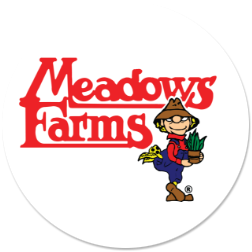Meadows Farms has been installing stone lined ponds with waterfalls and skimmers for almost twenty years, and we are convinced from our experience that this is the best, most economical way to build. We occasionally utilize UV lights, sand filters, and a variety of other filtration technologies, but we have found that the simple, natural system that we utilize is the easiest and most effective.
Most ponds will benefit from a thorough cleaning one time per year. You can arrange for Meadows Farms’ crew to perform your pond cleaning by calling our Landscape office, or by contacting us through this website. Our hourly charge for pond cleaning includes:
- moving fish into temporary storage tanks while we pump out the existing water
- pressure washing stones and gravel
- remove leaves and debris in the pond
- pruning pond plants as needed
- cleaning filter pads in skimmers and waterfalls
- filling pond water from your water source
- acclimate fish to new water
- adding de-chlorinator and start-up pond bacteria
Meadows Farms is available to perform regular pond maintenance, but you can probably perform many of the following pond maintenance tasks yourself:
Common Maintenance
The most common maintenance requirement should be to clean out filter pads and the leaf basket in skimmers and waterfalls as needed. With most ponds, this should be needed about once each month. If you notice that water flow to a waterfall or stream is diminished, check the skimmer to see if the leaf basket or filter pads need to be emptied and hosed off. In the Fall, when leaves drop, the leaf basket may have to be emptied more frequently.
Pond Level
Rainfall, temperature, and humidity determine evaporation amounts in the pond. During periods of high temperatures and low humidity, ponds can lose as much as one-half inch of water each day, and ponds with tall waterfalls can lose even more. Typically, a pond will lose about one-quarter inch to evaporation each day, so periodic rains may keep your pond filled without having to supplement by adding water. If the pond level goes down, or you hear the pump struggling because the water is below the opening of the skimmer, you will have to add water. You should be able to add water from your hose without taking any other precautions. When adding more than one-quarter of the pond’s total volume of water, you will have to add a dechlorinator to protect your fish if you are on a public water system.
Pond Bacteria
Natural bacteria assist in keeping pond water clear. Bacterial colonies flourish in the stone and gravel and break down nutrients that would feed algae growth. While these bacteria occur naturally, many pond owners choose to supplement with commercially available pond bacteria early in the Spring, and some follow a monthly regimen of adding bacteria. Pond bacteria can be purchased through Meadows Farms or one of the many pond supply companies on the internet. We have found that products from Ecological Laboratories, although very stinky, are very effective, but there are many good products available. We do not recommend most products billed as algae killers unless they specifically state that they are safe for fish and plants. Chlorine or bleach should never be added to a pond with fish or plants.
Algae
There are several types of pond algae. Only in rare cases do ponds constructed with stone and gravel experience the type of algae that turns water opaque green. In early Spring this can happen for a short period while bacterial colonies are establishing as the water warms.
The most common algae are forms of string algae. Even with clear pond water, string algae can be unsightly, growing on waterfalls and streambed rocks. Many ponds never have any string algae problems, since the pH of the pond water seems to be the determining factor. But, it can be a big problem in other ponds. String algae can be removed by hand, or you can supplement your pond with one of several types of natural additives that seem to slow growth or even prevent it. Barley straw mini bales, or extracts from barley straw, are often effective in slowing or preventing string algae. There are also algaecides that are derived from the same natural processes as decaying barley that kill existing string algae and can prevent growth if used regularly.
Fish & Plant Maintenance
Fish need practically no regular maintenance. Even feeding them is optional, since they can survive solely on food they scavenge in the pond. However, with regular feeding, fish will grow quickly and will be friendlier to visitors. Without regular feeding they will hide from people. While there are fish diseases, problems are rare in healthy ponds and much more evident in indoor aquariums. Koi and goldfish are good trouble-free fish, they add enjoyment and will keep even still water ponds free of mosquitoes.
Most pond plants are perennials and annuals, with just a few evergreens. Most will need to have their dead foliage removed at the end of the growing season, or at the beginning of the Spring with a pond clean-up. Because plants growing in or at the edge of the pond are adapted to growing in water and the pond doesn’t dry up, many grow prolifically. Some pond plants grow so quickly that they require regular pruning to keep them from taking over the pond. Many of these are best avoided unless you have a monthly pond maintenance contract.
Schedule A Cleaning
"*" indicates required fields

